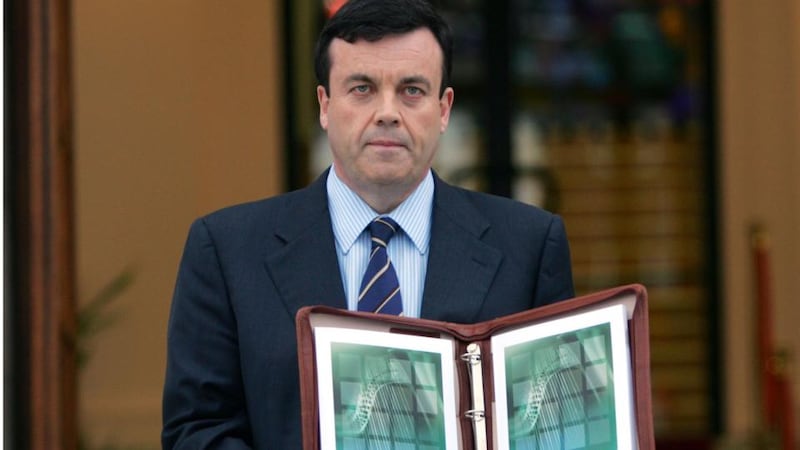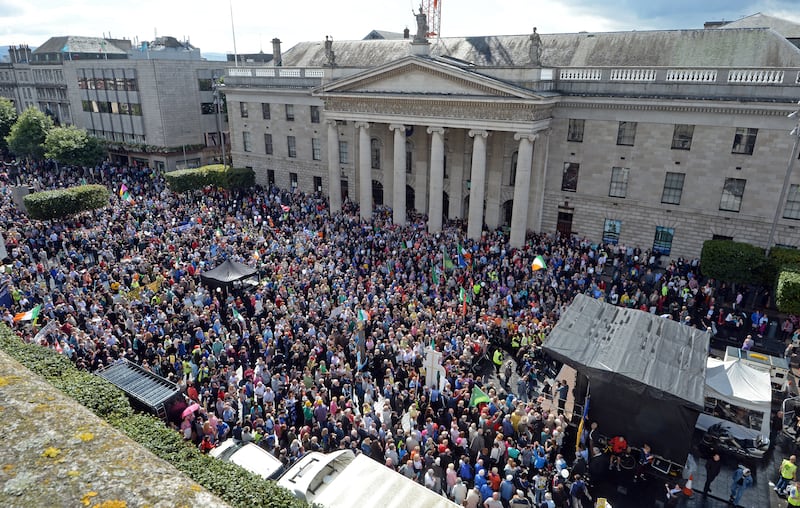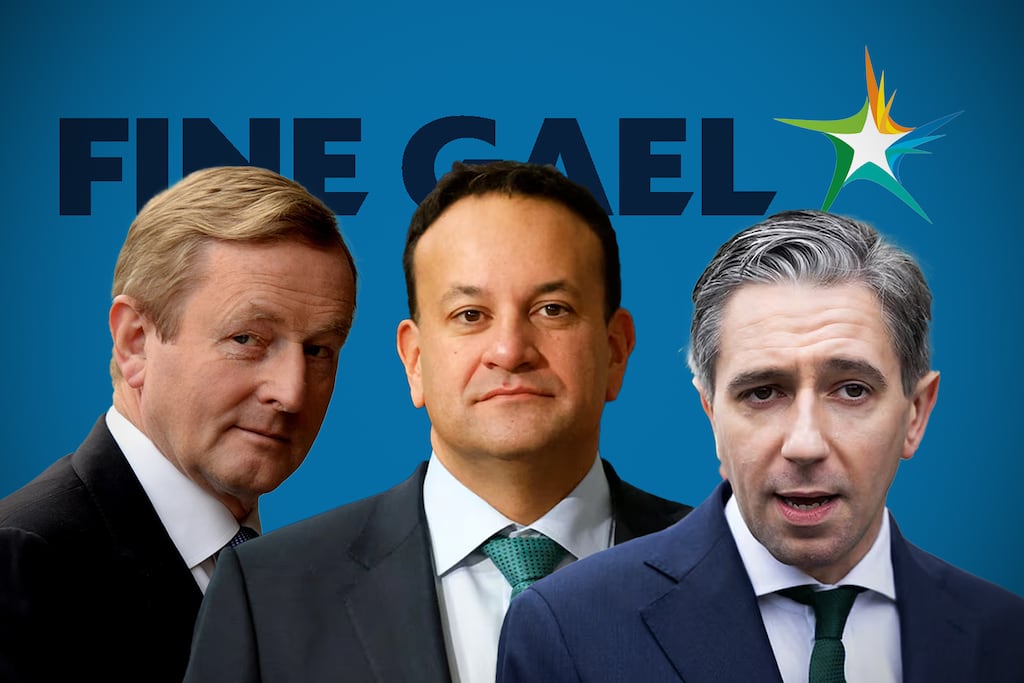We’ve come a long way since 2011, when the State grappled with the aftermath of the financial crisis and the resulting near collapse of the Irish banking sector and property market. Taxpayers bore the brunt of the cost of recovery at the time, but how have they fared since?
Well, one party has been in power – albeit in various guises – since that time, and that is Fine Gael. First it was under Enda Kenny as taoiseach, when it joined forces with Labour for a coalition government that lasted until 2016. Then, it remained in power as part of a Fianna Fáil alliance, with Leo Varadkar assuming the role of taoiseach in June 2017, a position he held, off and on, in conjunction with Fianna Fáil’s Micheál Martin, until his resignation in April this year. Now Simon Harris is at the helm.
So, with a general election on the horizon, and in advance of next week’s budget, we take a look at how the party has impacted your pocket in the years since it came to power.
Income taxes
Every year around budget time, we take a look at how our “budget families”, representing different household types around the State, have fared from the latest tax changes.
RM Block
Tracking these back to 2011, we can see that all our families, from those on lower incomes to those with more money coming in, are better off from a personal income tax perspective, as taxes have undoubtedly slid during the period 2011-2024.
“It was really 2016-2017 when things started to change,” says Katie O’Neill, a director with PwC.
Those on higher incomes haven’t fared as well but this is not unexpected, given that in the last couple of budgets, the Government was trying to help the squeezed middle
— Katie O'Neill, PwC
In 2011, for example, a single parent earning €36,000 would have kept €2,394 a month of their wages; this year it has jumped to €2,738, an increase of almost 15 per cent.
Similarly, a dual-income family earning €175,000 would have had monthly take-home pay of €8,833 in 2011 – now it’s at €9,146.
And who fared best?
Looking at our table, it’s clear that our single parent, Tom, on income of €36,000, has seen the biggest increase in his take-home pay since 2011. In that time it has increased by almost 15 per cent, or some €344 a month. On the other hand, our top earners, Mark and Linda, on combined income of €325,000, have seen their net pay rise by a more modest 5.4 per cent over the period, or almost €800 a month.

“Those on higher incomes haven’t fared as well but this is not unexpected, given that in the last couple of budgets, the Government was trying to help the squeezed middle,” says O’Neill.
Of course, comparing 2011 with 2024 is not always fair; swingeing tax hikes were introduced in 2011, in the wake of the crash, whereas the exchequer’s coffers have been in rude health of late. Even without the Apple bonus.
And, gains over this period are unlikely to be as significant to families in “real” terms. As O’Neill says, “It doesn’t take into account inflation, so people may not feel they have had a benefit in that period. The cost of living is so much higher [today] than it was in 2011.″
Widening the tax bands has been key to reducing the tax burden. In 2011, for example, a single person could only avoid the higher rate of tax on earnings up to €32,800; this has now increased 28 per cent to €42,000 – and will probably increase again next week.
Tax credits have also increased: back in 2011, the home carer’s credit was worth just €810, but now stands at €1,400.
Similarly, as O’Neill points out, while there was a rent credit available in 2011, it was only available if you met certain conditions, and was being tapered out at the time. Now there is a rent credit of €750 available, with talk of a further increase.
And there have been new credits introduced, such as the earned income credit, for the self-employed.
However, some credits have increased at a slower rate: the PAYE credit, for example, has only increased from €1,650 back in 2011, to €1,875 for this year. It was worth €1,830 a year in 2008 – so it clearly hasn’t kept pace with inflation.
Despite the cuts, the tax yield from income tax continues to reach new highs; last year it hit a record €32.9 billion, representing just over 37 per cent of the total exchequer yield. Proportionally, however, it hasn’t changed too much (although USC can also be added to the above). In 2011 some €16 billion was raised from income tax. Though a much smaller sum, it still accounted for about 40 per cent of the total tax take.
Another insight into how taxation has evolved over this period comes from the number of taxpayers paying tax at the higher rate compared with 2011.
Latest figures from Revenue show there will be more than a million higher rate payers (or “units”, as it can include jointly assessed couples) next year, accounting for 31 per cent of all taxpayers. In 2011 there were fewer than 350,000 higher rate taxpayers, representing 17 per cent of the total.
While Revenue notes that these figures aren’t directly comparable, due to changes in how the information is compiled over this period, it does show a clear trend in more people paying more tax.
New and rising taxes

While the income tax burden have been on a downward trend since 2011, it doesn’t mean there haven’t been new takes or tax hikes.
The universal social charge (USC) was introduced at the height of the financial crisis in December 2010 by the then minister for finance, the late Brian Lenihan of Fianna Fáil. While there were subsequent promises that it was only a temporary tax, most tax experts say it is now here to stay, having brought in some €5.4 billion last year alone.
The burden of PRSI has also increased: back in 2011, the first €127 of income a week was exempt from PRSI. This changed in 2013 and a further increase is due on October 1st, when the rate of employee PRSI will increase from 4 per cent to 4.1 per cent. Further increases are scheduled for the years ahead as the Government looks to meet the cost of rising pension payments.
“It’s the first time we’ve seen that in quite some time,” says O’Neill.
The standard VAT rate also increased over the period, up from 21 per cent in 2012 to 23 per cent.
And, while Fine Gael’s ill-fated attempt to introduce water charges hit a wall, it did manage to push through a number of other revenue-raising measures.

These include local property tax, which was introduced in 2013 to replace the household charge and the non-principal private residence/second home charge. However, despite rising property values over the period, the yield from the tax hasn’t increased substantially. In 2014 the tax raised some €493 million. Fast-forward to 2023 and the yield stood at just €511 million.
A house valued at €280,000 will incur an annual bill of €315 today, but in 2014 it was substantially higher, at €495.
This tax hit all our budget families who own their own homes. Our higher-earning couple, Mark and Linda, living in a €1.5 million home in Dún Laoghaire, paid tax of some €3,050 on their home back in 2014. This has since shrunk to €1,941.
Similarly, our pensioners, Leslie and Kitty, had a bill of €675 back in 2014 but this has now fallen to €435.
Another new tax is the sugar tax, which was introduced in 2018 and is levied on drinks that have added sugar, and certain plant-protein drinks. It pushes the cost of a litre of sugary drinks up by 20-30 cent, and brings in about €30 million a year.
O’Neill also points to the introduction of the vacant home taxes, concrete products levy, solid fuel carbon tax and the nitrogen oxide levy.
Inheritance taxes
[ Inheritance tax: How many people actually pay it?Opens in new window ]
It has been raised several times as an issue in advance of this year’s budget, but how have inheritance taxes fared over the life of the Fine Gael-related governments?
Well, as our table shows, the parent and child threshold has increased since 2011, up from €250,000 at that time to €335,000 today. Of course, property values slumped in the aftermath of the financial crisis, and have surged thereafter, which means the 2011 threshold may in fact have been of more value to families.
In 2015, we reported that the government was considering a threshold of as much as €500,000 for family homes: nine years on, it remains far from that level. Some change, however, is likely next week.
- Sign up for Business push alerts and have the best news, analysis and comment delivered directly to your phone
- Find The Irish Times on WhatsApp and stay up to date
- Our Inside Business podcast is published weekly – Find the latest episode here






















